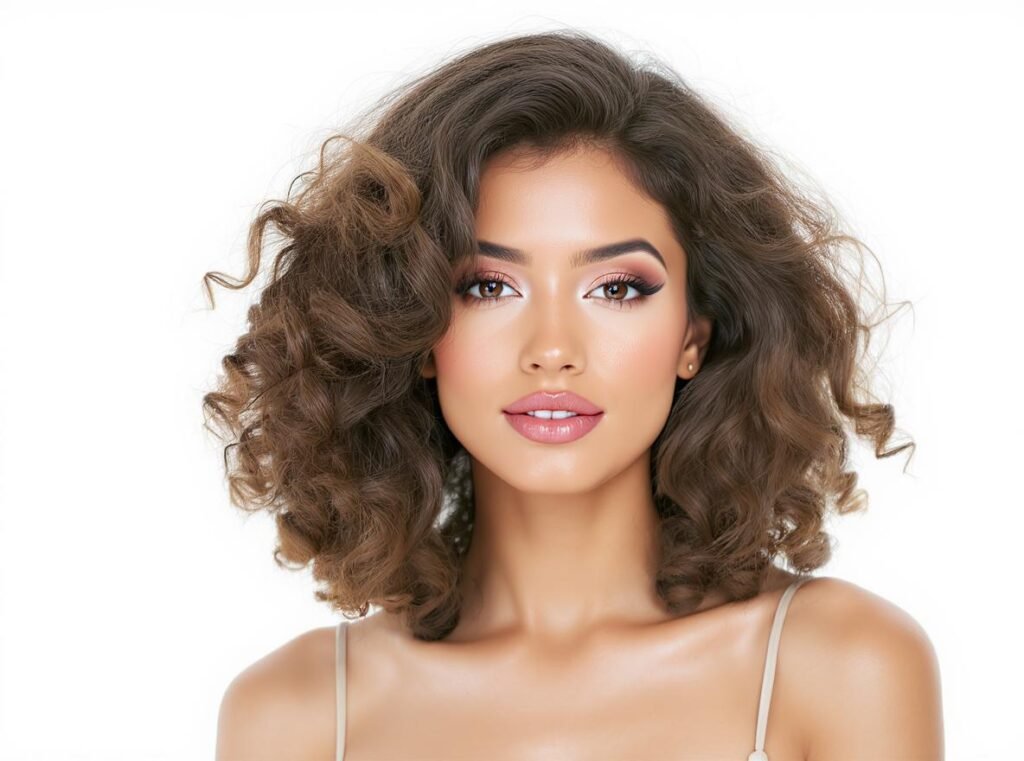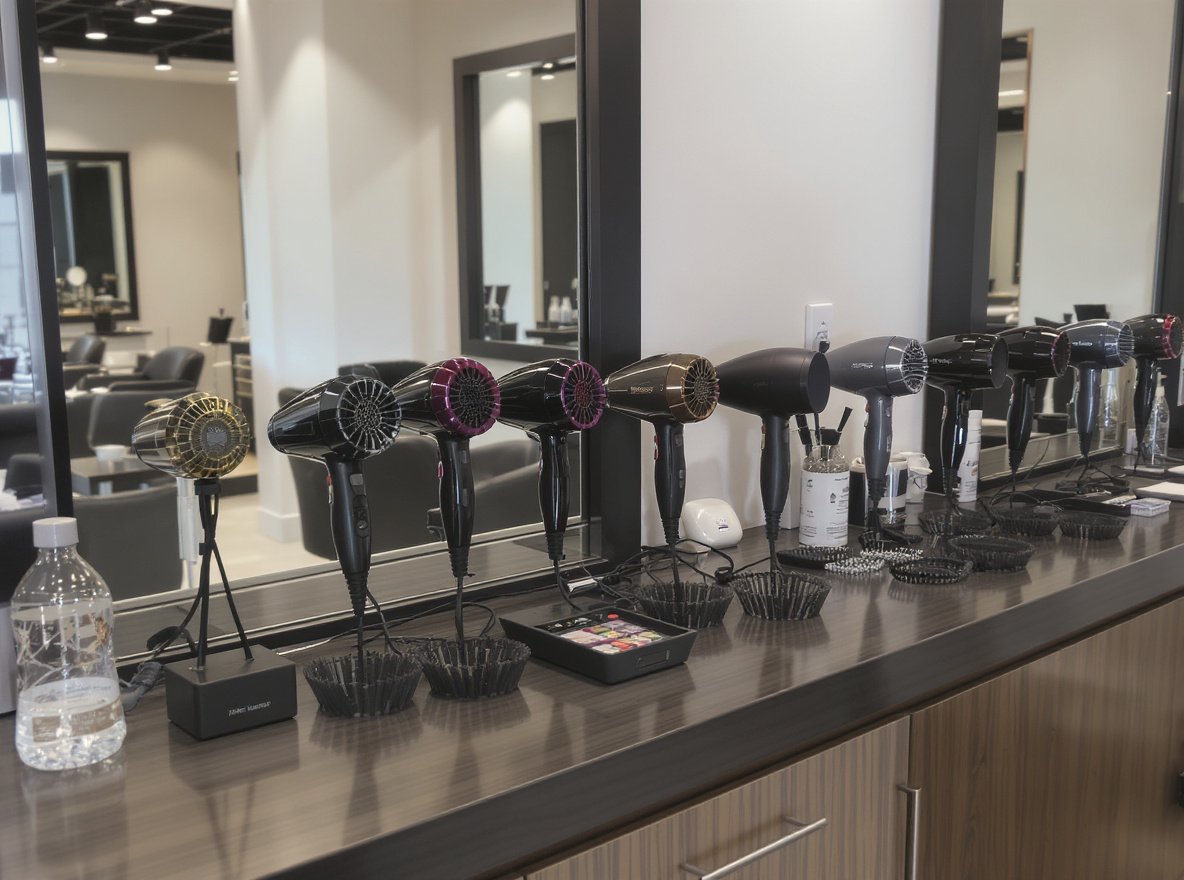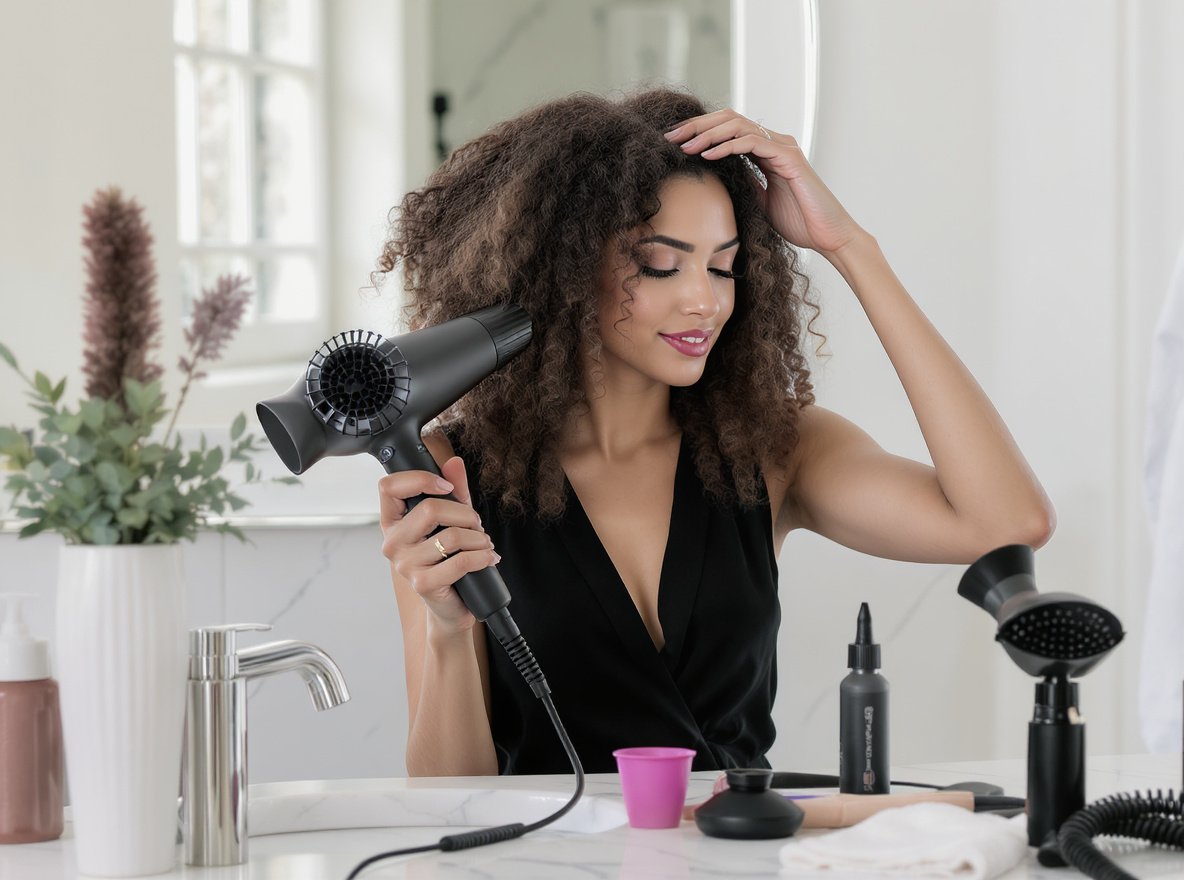Tired of relying on expensive styling products and heat tools? You’re not alone. Many people struggle with achieving salon-worthy hairstyles without damaging their hair or spending a fortune on products that promise miraculous results but often fall short.
Here’s the truth: You can create stunning, professional-looking hairstyles using nothing but natural techniques, everyday household items, and a bit of patience. These product-free methods not only save money but also promote healthier hair by avoiding harsh chemicals and excessive heat damage.
Ready to discover the secrets of effortless, natural hair styling? Let’s explore proven techniques that work for every hair type and texture.
Table of Contents
ToggleWhat Are the Best Natural Hair Styling Methods?
Understanding natural styling methods is crucial because they form the foundation of healthy hair care routines. These techniques work with your hair’s natural texture rather than against it, promoting long-term hair health.
The most effective natural hair styling methods include proper towel drying, the reverse brush method, finger sculpting techniques, overnight braiding, and the plopping method for curly hair. These approaches work with your hair’s natural texture and hydrogen bonds to create lasting styles without chemical intervention or heat damage.
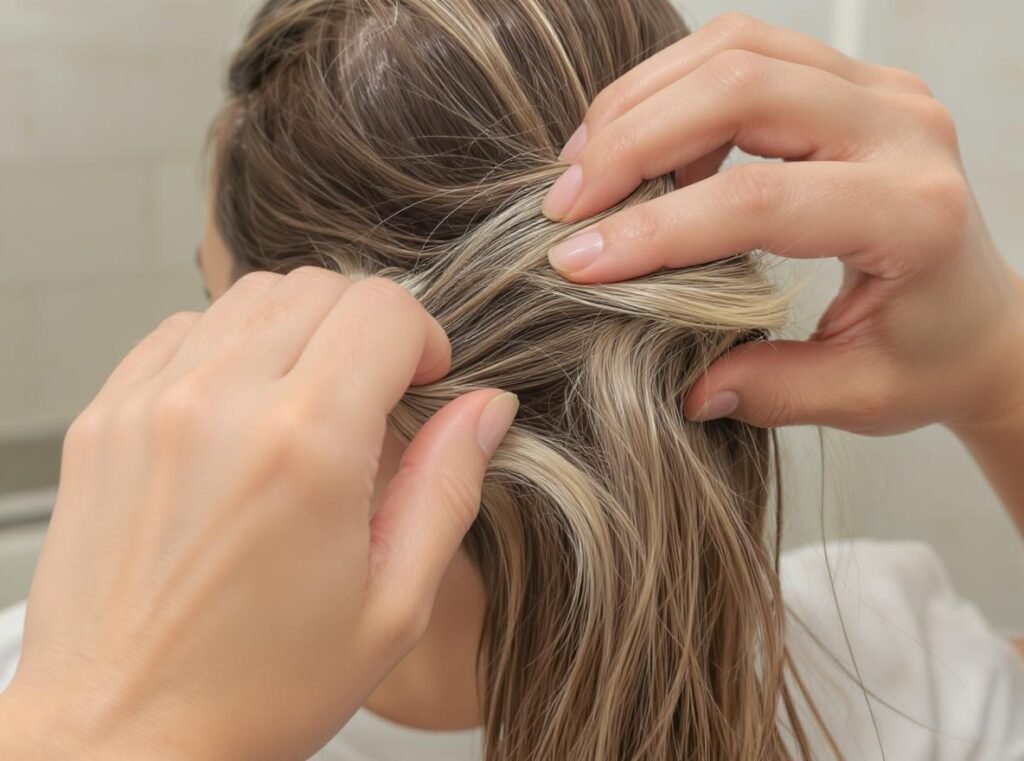
Air-Drying Techniques
Professional Towel Drying Technique
The foundation of product-free styling begins with proper towel drying. Instead of roughly rubbing your hair, gently blot excess moisture by pressing the towel against hair sections from root to tip. This pressing motion prevents frizz and tangles while avoiding the damage that comes from aggressive rubbing.
Use a microfiber towel or cotton t-shirt instead of regular terry cloth towels. The smooth surface of these materials doesn’t disrupt your hair’s natural texture like rough towels do, making them ideal for all hair types.
The Reverse Brush Method
This technique involves starting at the ends and working your way up to the roots. This method distributes natural oils more evenly throughout your hair shaft while preventing breakage that occurs when you brush from roots to ends on tangled hair.
For additional styling options, try the slick back method using just a brush to smooth hair away from your face, or use a wide-tooth comb on damp hair to create your desired style as it air dries.
Advanced Finger Styling Methods
Your fingers are sophisticated styling tools that can create professional-looking results:
The Poking Method: Use your fingertips to poke and lift sections of hair to create natural volume and texture. This technique works particularly well for adding movement to flat hair.
The Sculpting Method: Shape and mold hair into place using your palms and fingers for a sleek, polished appearance. This method is excellent for creating controlled styles without products.
The Gripping Method: Hold sections of hair in place while they dry to create intentional texture and a naturally tousled look.
The Plopping Technique for Curly Hair
This method involves laying a cotton t-shirt flat, flipping your wet curly hair onto it, and wrapping it up like a turban. The gentle compression prevents gravity from disrupting curl formation while the smooth fabric reduces frizz. Leave hair “plopped” for 10-20 minutes to enhance your natural curl pattern.
Overnight Styling Methods
Transform your sleep time into styling time with these proven techniques:
Robe Belt Curls: Wrap damp hair around a dressing gown belt or soft fabric strip and sleep with it in place. This creates loose, natural curls without discomfort.
Sock Curls: Use clean socks or tights as gentle curling tools. Roll small sections of damp hair around the sock and tie it off for tight spirals.
French and Dutch Braids: Braid slightly damp hair before bed to create natural waves. Dutch braids (where strands pass under each other) are particularly effective for creating defined texture.
Bantu Knots: This protective styling technique involves sectioning hair and twisting each section into small knots. When released, Bantu knots create voluminous, defined curls that work exceptionally well for natural hair textures.
How Can I Create Volume Without Heat or Products?
Volume is often the biggest challenge when styling without traditional tools. Many people believe heat is essential for lift and body, but natural methods can be equally effective.
Create natural volume by using the opposite part method, root clipping techniques, velcro rollers, and strategic upside-down styling. These methods work by manipulating your hair’s natural fall patterns and encouraging lift at the roots where volume is most visible and impactful.
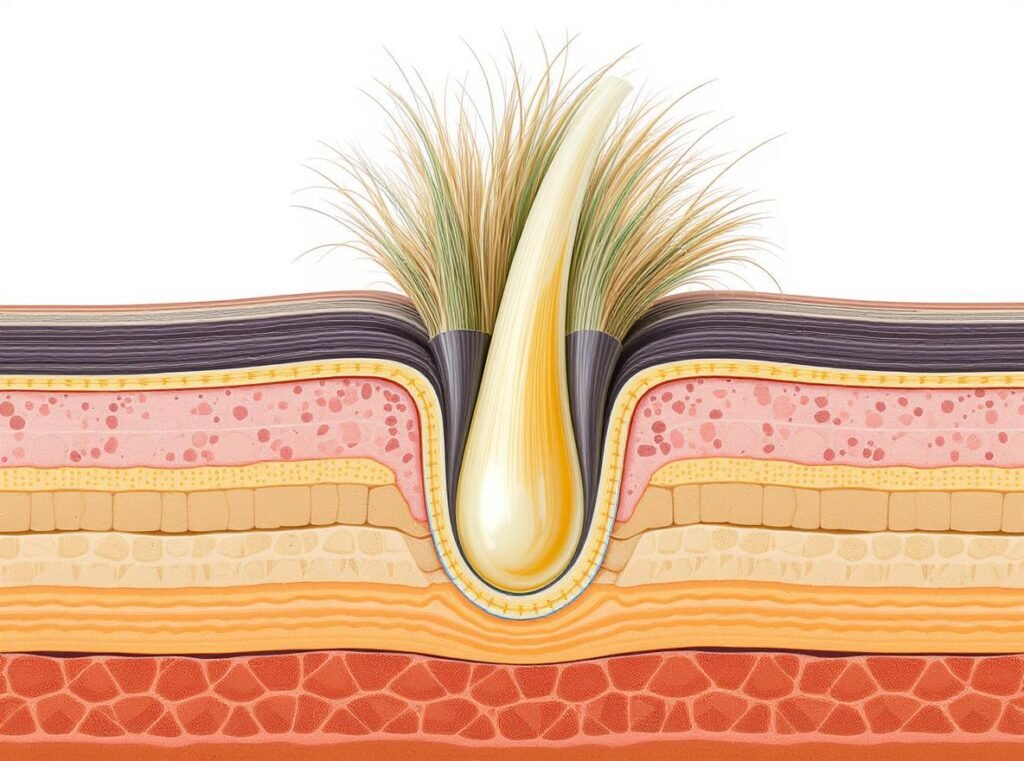
Professional Root-Lifting Techniques
The Opposite Part Method: This simple technique creates instant volume by parting your hair on the opposite side while it dries, then flipping it back to your normal part once completely dry. This works because your hair isn’t accustomed to falling in that direction.
Root Clipping Method: Place small clip barrettes close to your scalp while hair is damp, positioning them sideways so hair sticks up. Focus on the crown area where volume is most noticeable. Leave clips in for 30-60 minutes while hair dries.
Velcro Roller Technique: Place three to four large velcro rollers at the crown of damp hair and allow to dry completely. Remove rollers and gently finger-style to maintain the created lift.
Upside-Down Styling Methods
Flip your head upside down and gently massage your scalp with fingertips while hair hangs down. This increases blood flow to the roots and encourages natural lift. You can also brush or scrunch hair in this position to enhance volume further.
Texture-Building Methods
- Twist small sections of damp hair and let them air dry
- Braid your hair loosely when it’s 80% dry, then release for natural waves
- Scrunch your hair upward repeatedly while it’s drying
- Use your fingers to lift and separate sections as they dry
What Household Items Can Replace Hair Styling Tools?
You probably have everything you need for professional-looking styles right in your home. These everyday items can replace expensive styling tools and often work better than commercial alternatives.
Common household items that excel as styling tools include cotton t-shirts, clean socks, silk scarves, aluminum foil strips, paper bag pieces, and even forks for precision styling. These alternatives often provide gentler, more natural-looking results than expensive commercial tools.
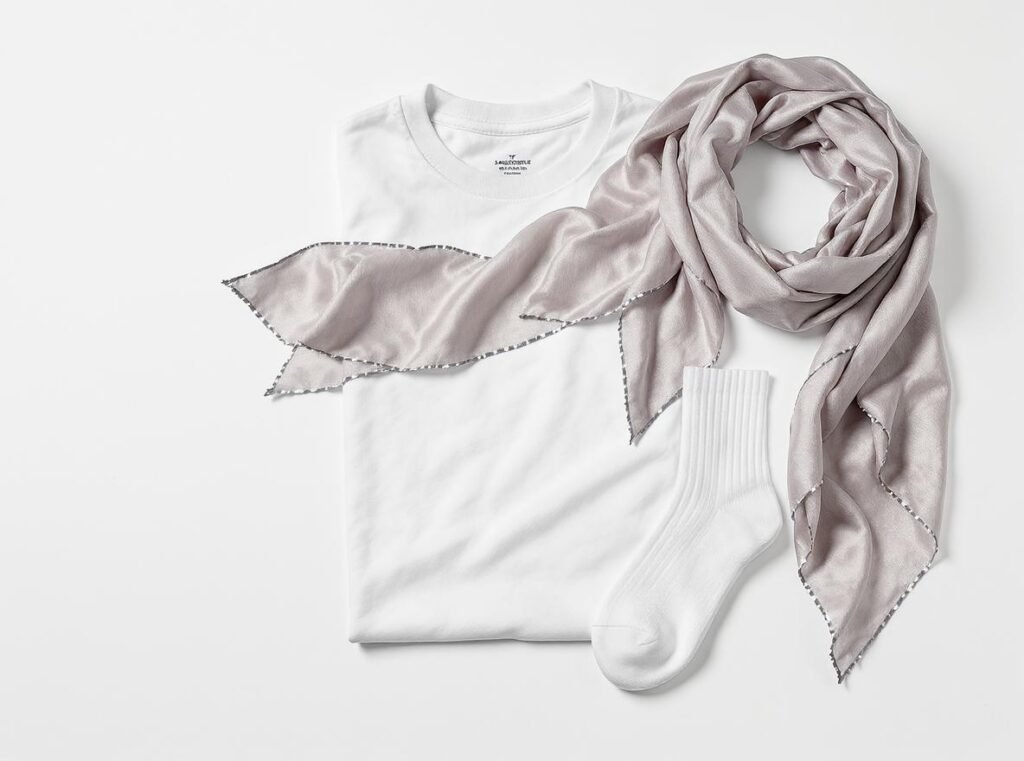
Advanced Household Styling Tools
Aluminum Foil Strips: Cut aluminum foil into strips and use them like traditional curling papers. Wrap small sections of damp hair around the foil strips for tight, defined curls. The foil holds shape better than fabric and doesn’t absorb moisture from your hair.
Paper Bag Curls: Cut paper bags into strips and use them similarly to rag curls. The paper provides just enough grip to hold hair in place while being gentle enough not to cause breakage.
Fork Styling for Precision: Use a clean fork to create precise styling details, particularly for men’s hair or when you need to position individual strands. Apply a small amount of water to dry hair and use the fork prongs to direct specific sections.
Creative Fabric Alternatives
Silk scarves and smooth fabric strips work excellently for overnight styling because they create less friction than cotton while you sleep. They’re particularly effective for maintaining curl patterns and preventing frizz.
Clean socks can be used in multiple ways – as curling tools, as gentle hair ties, or even as protective coverings for ponytails to reduce breakage.
How Long Do Natural Styles Last Compared to Heat-Styled Hair?
Duration and longevity are major concerns when switching to natural styling methods. Understanding how long these styles last helps you plan your routine and set realistic expectations.
Natural styles typically last 2-5 days with proper maintenance, often significantly longer than heat-styled hair. The key advantage is that natural styles evolve gracefully – curls may loosen into waves over several days, providing multiple looks from one styling session, while heat-styled hair tends to fall flat quickly.
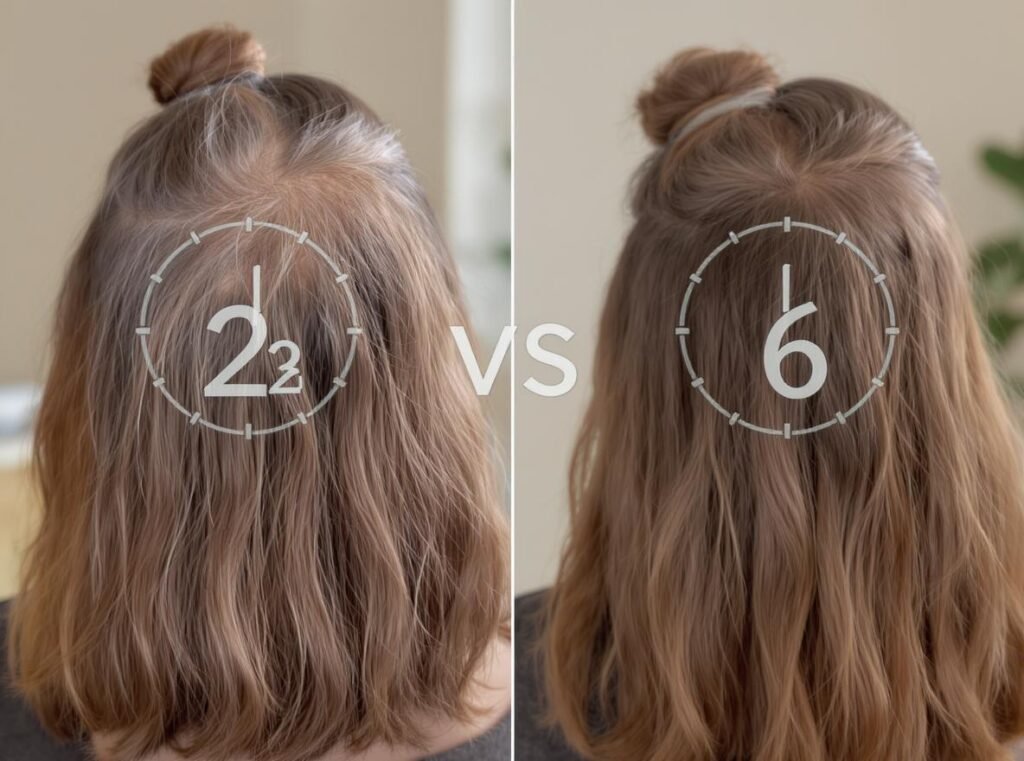
Why Natural Styles Last Longer
Natural styling methods work with your hair’s natural texture and hydrogen bonds rather than forcing it into unnatural shapes. This creates more durable styles that resist humidity and environmental factors better than heat-styled hair.
Protective styles like braids, twists, and Bantu knots can last several days to weeks with proper maintenance, making them ideal for busy lifestyles or extended wear.
Heat-Styled Hair Limitations
Heat styling creates temporary hydrogen bonds that are easily disrupted by moisture and humidity. This means heat-styled hair typically requires daily re-styling and is particularly susceptible to falling flat in humid conditions.
The artificial shapes created by heat styling break down much faster than natural textures, often within hours of styling depending on environmental conditions.
Advanced Maintenance Techniques
The Pineapple Method: Gather curly hair very loosely at the very top of your head with a scrunchie before bed. This prevents crushing curls while you sleep and maintains definition for multiple days.
Silk Pillowcase Benefits: Silk or satin pillowcases create less friction than cotton, helping maintain your style overnight and reducing tangles and frizz.
Strategic Refreshing: Lightly mist hair with water each morning and scrunch or smooth as needed. This revives natural texture without completely re-styling.
- Use a spray bottle with water for quick refreshing
- Apply natural oils like coconut or argan oil to dry ends
- Avoid touching hair throughout the day to prevent frizz
- Protect styles from humidity with natural barriers like light oils
Are Natural Styling Methods Suitable for All Hair Types?
Hair type compatibility is essential to consider when adopting natural styling methods. Different hair textures and types respond differently to product-free techniques.
Natural styling methods work for all hair types, but the specific techniques and expected results vary significantly. Fine hair benefits most from volume-building methods, while thick hair responds well to texture-enhancing techniques, and curly hair thrives with moisture-retention methods.
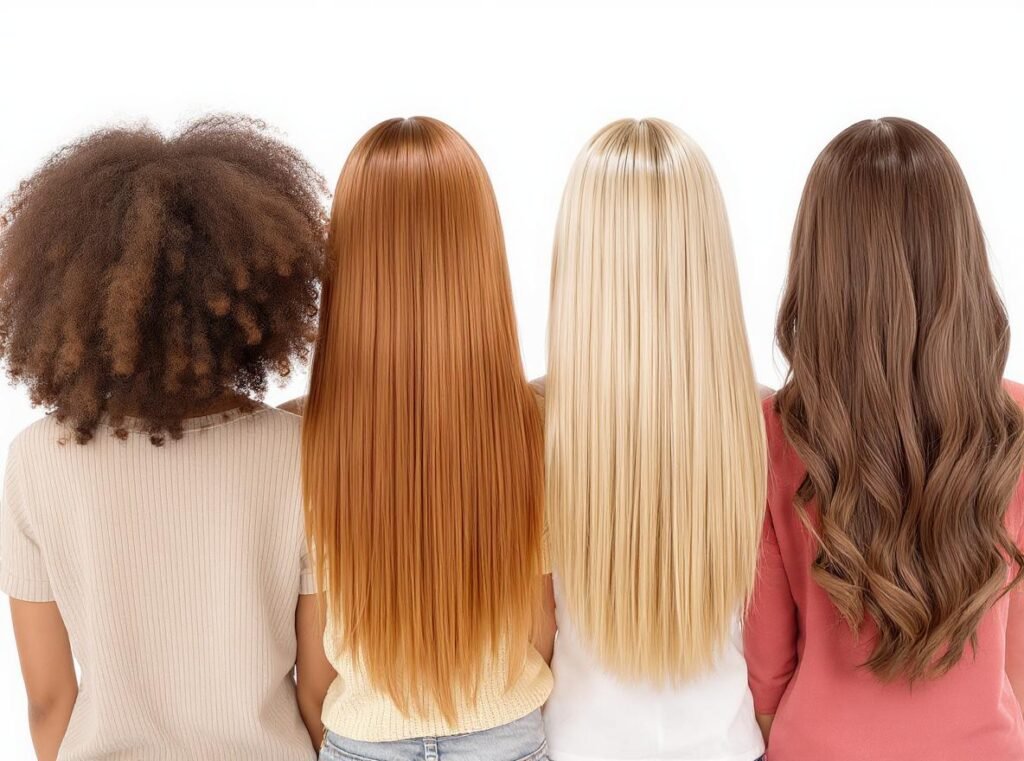
Hair Porosity and Natural Styling
Understanding your hair’s porosity level is crucial for natural styling success. Low porosity hair may require longer setting times for natural styling methods, while high porosity hair typically holds styles more easily and responds faster to styling techniques.
Test your hair’s porosity by placing a clean strand in water. If it floats, you have low porosity hair. If it sinks quickly, you have high porosity hair. This knowledge helps set realistic expectations for styling results.
Length and Texture Considerations
| Hair Type | Best Natural Techniques | Expected Results | Styling Frequency |
|---|---|---|---|
| Fine hair | Volumizing methods, gentle manipulation | Increased body, natural movement | Daily touch-ups |
| Thick hair | Sectioning, overnight methods | Long-lasting texture, defined styles | 2-3 days |
| Curly hair | Plopping, scrunching, protective styles | Enhanced curl definition | 3-5 days |
| Straight hair | Braiding, twisting, root lifting | Added texture and volume | 1-2 days |
Very short hair benefits from finger styling and natural texture enhancement, while longer hair has more options for braiding, twisting, and protective styling methods.
What Are the Long-Term Benefits of Heat-Free Styling?
Understanding the long-term advantages helps maintain motivation for natural styling methods. These benefits extend beyond immediate appearance to overall hair health and maintenance costs.
Long-term benefits of heat-free styling include reduced hair damage, improved natural texture, lower maintenance costs, enhanced hair growth, and better scalp health. These advantages compound over time, making your hair progressively easier to style naturally.
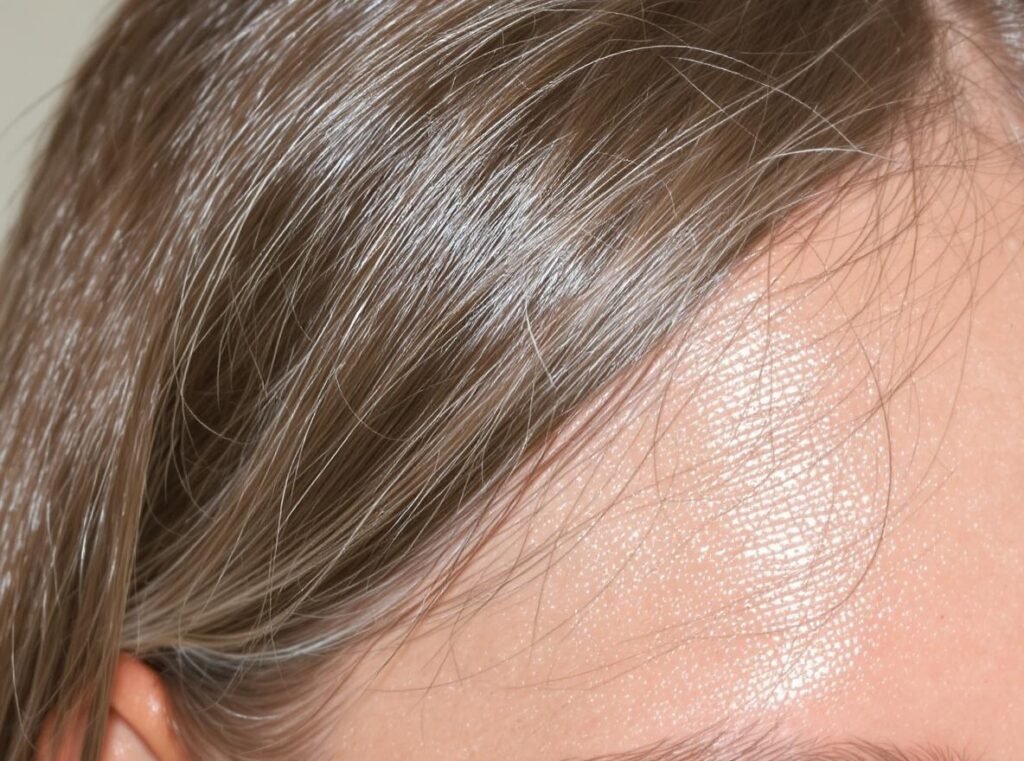
Scientific Benefits of Heat-Free Styling
Protein Preservation: Heat styling can cause hair to lose up to 86% more protein than virgin hair. Natural styling methods preserve your hair’s structural keratin proteins, maintaining strength and elasticity over time.
Moisture Retention: Heat-free styling preserves your hair’s natural moisture content, preventing the dryness and brittleness associated with temperatures above 300°F. Well-moisturized hair is stronger, more elastic, and less prone to breakage.
Hydrogen Bond Protection: Natural styling works with your hair’s natural hydrogen bonds rather than temporarily disrupting them with heat. This creates more durable styles and healthier hair structure.
Economic Benefits
The cost savings are substantial when you eliminate styling products and reduce heat tool usage:
- No need for heat protectants, gels, mousses, or sprays
- Reduced electricity costs from hair dryer usage
- Less frequent hair tool replacement
- Fewer professional salon visits for damage repair
- Reduced need for deep conditioning treatments
Environmental Impact
Natural styling methods have a significantly lower environmental footprint. You reduce plastic waste from product containers, decrease energy consumption from heat tools, and minimize chemical runoff into water systems.
When Should I Consider Using Professional Tools?
While natural methods work well for daily styling, there are specific situations where professional tools might be necessary or beneficial, especially in commercial settings.
Consider professional tools for special occasions requiring highly polished looks, career requirements with specific styling needs, extreme weather conditions, or when quick styling is essential for time-sensitive situations. For wholesale and retail businesses, understanding when to recommend natural methods versus professional tools ensures optimal customer satisfaction.
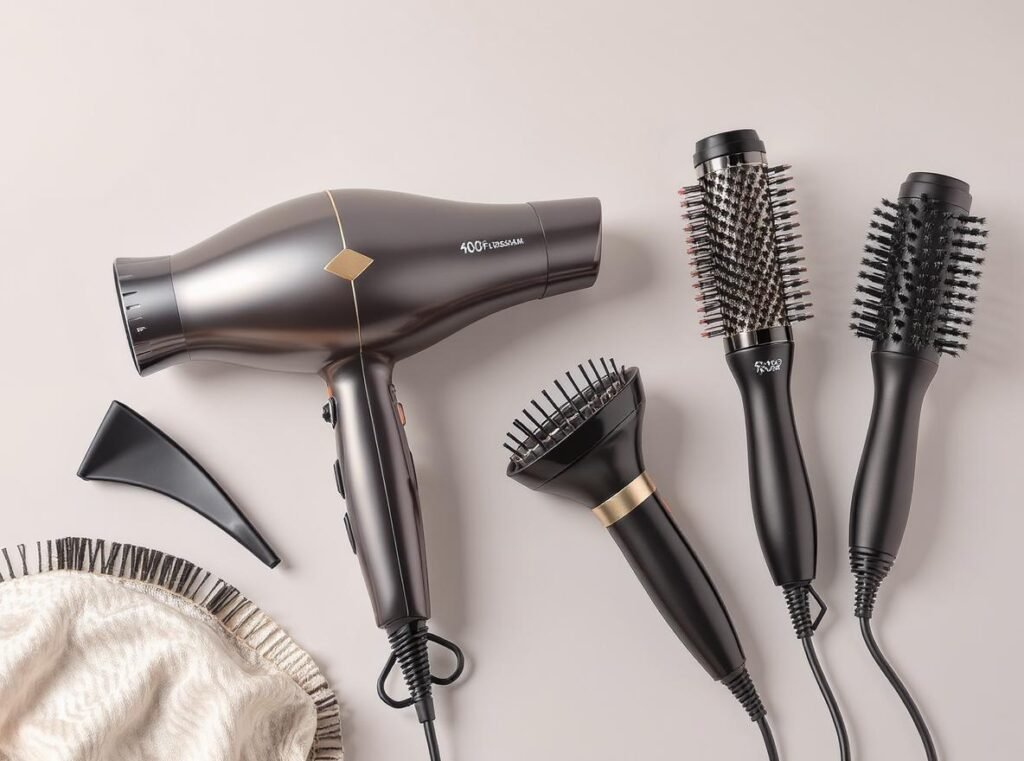
Professional Tool Advantages
Advanced Technology: Professional tools feature ceramic plates, ionic technology, and precise temperature controls that minimize damage while maximizing styling effectiveness. These technologies provide superior precision and durability compared to consumer-grade equipment.
Consistency and Control: Professional tools are designed to withstand heavy use and provide consistent results, making them essential for salon environments and businesses requiring reliable performance.
Strategic Tool Usage
Professional tools should be used sparingly and with proper heat protection. Consider your hair’s current condition, porosity, and damage level when deciding whether to use professional tools. Severely damaged hair should avoid heat entirely until it recovers.
For businesses serving diverse customer needs, offering both natural styling education and professional-grade tools like the Laifex P1C creates comprehensive solutions that address immediate styling needs while promoting long-term hair health.
Summary
Natural hair styling without products or heat tools is not only possible but often superior for long-term hair health. These methods work with your hair’s natural properties, reduce damage, and save money while delivering beautiful, lasting results. From air-drying techniques to overnight styling methods, household items can replace expensive tools effectively.
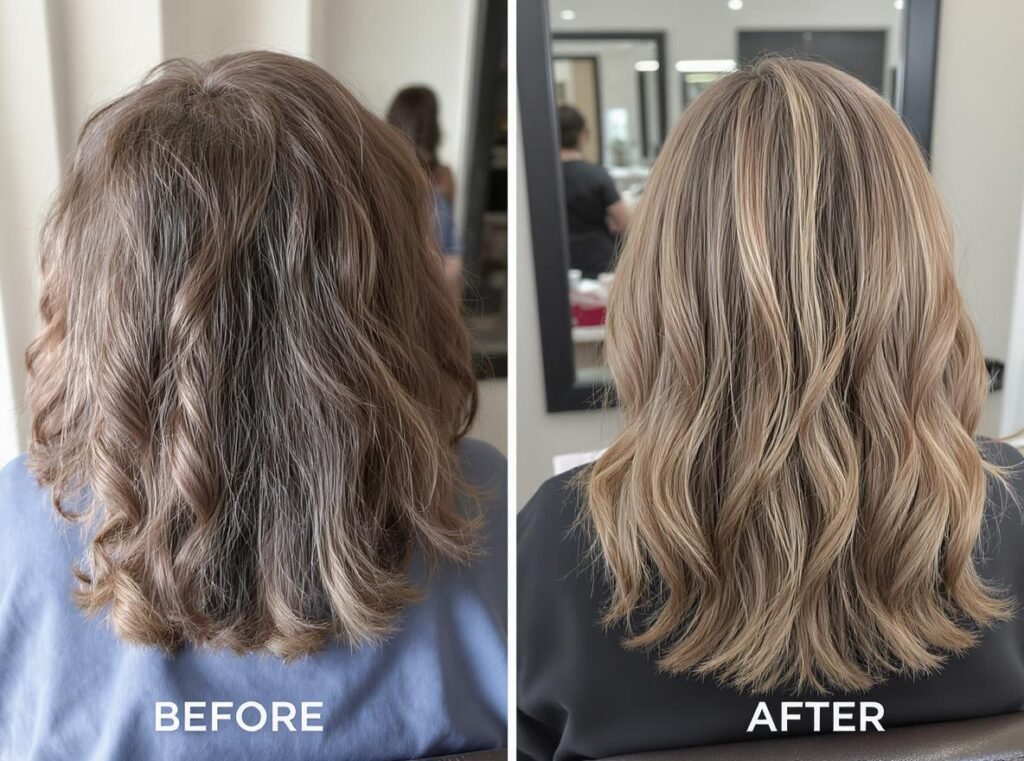
Ready to explore professional-grade solutions for your business? Browse our complete range of high-speed hair dryers and contact us for wholesale inquiries at Laifex.com.

